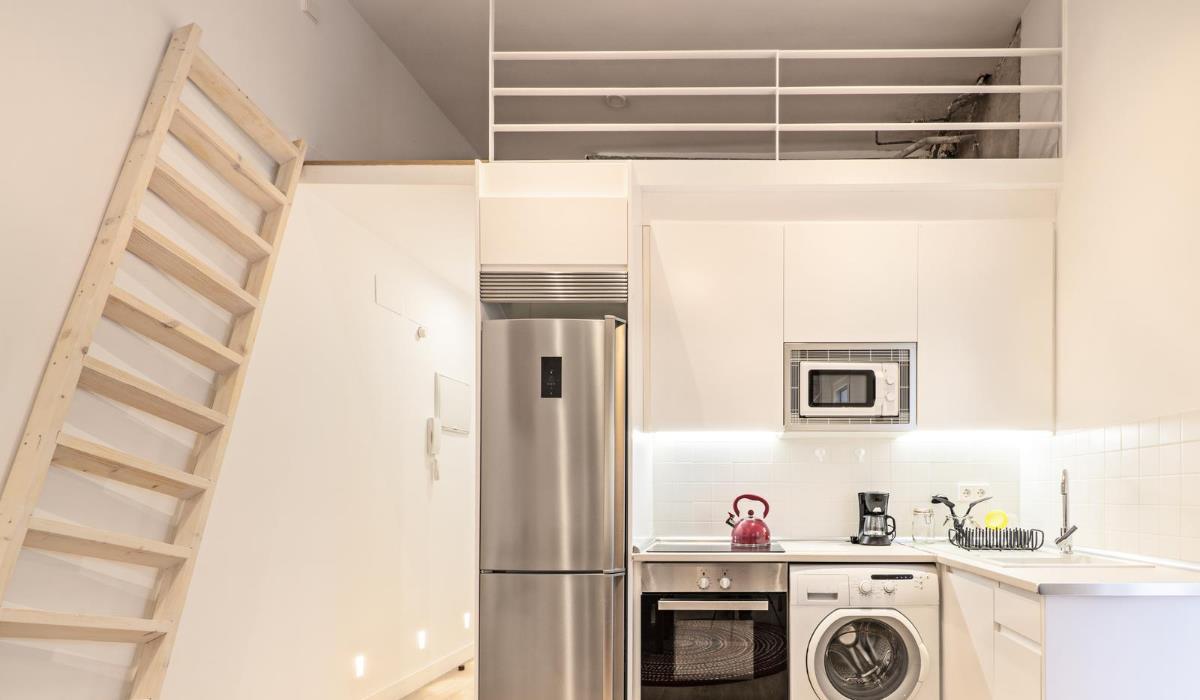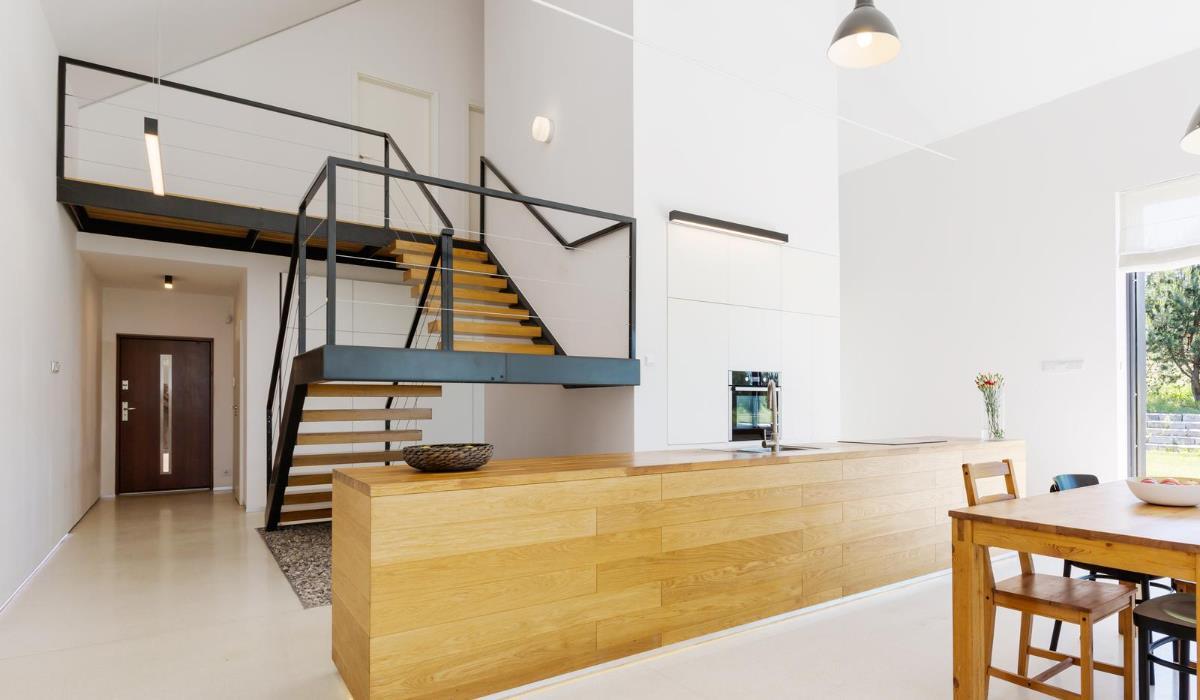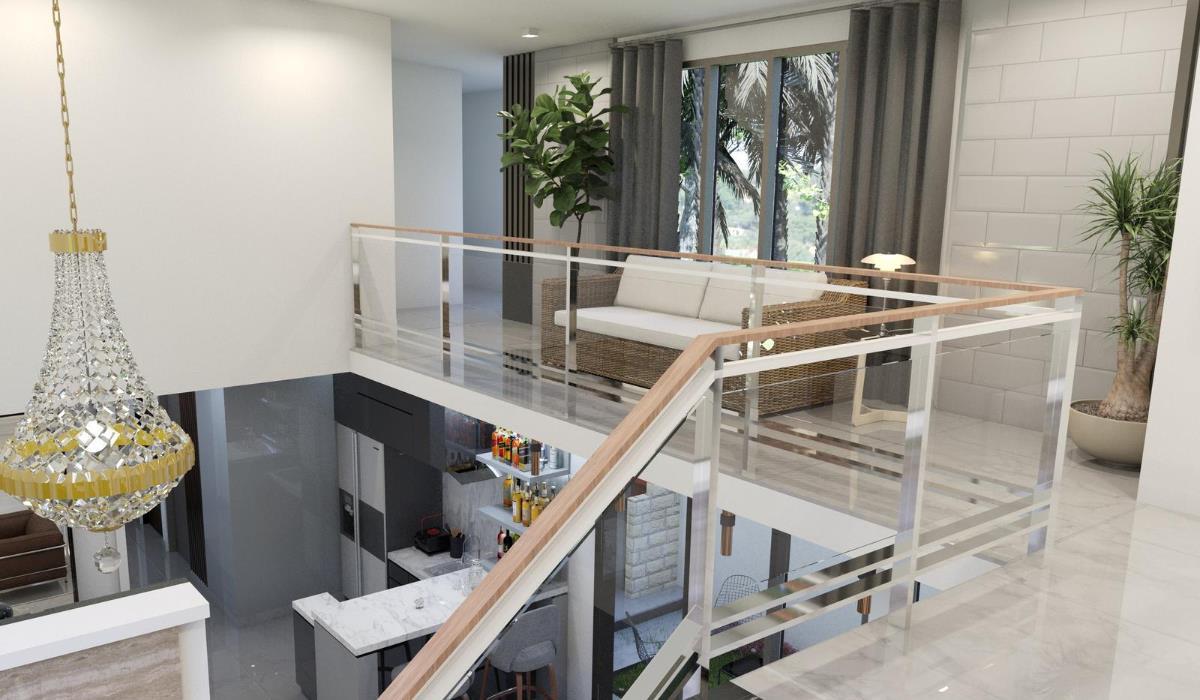The mezzanine allows you to create a practically new room in places with high ceilings or a large and unused attic space. It provides extra floor space, together with an impressive sense of open space. The mezzanine is usually built as part of the conversion, renovation or expansion of a house or loft (post-industrial) apartment. It may also concern the adaptation of the attic, garage, as well as the conversion of a barn or outbuilding. In this guide, we try to answer the question of when it is worth building a mezzanine and what are the unobvious advantages of having it?
Why is it worth installing a mezzanine?
Typical situations where a mezzanine may be appropriate are conversions where the nature of the building requires a high (double) room height. It can also be a good design solution for listed buildings, where horizontal roof beams, spanning between the roof space, are an obstacle to creating an independent floor and cannot be changed.
On a smaller scale, a mezzanine can be an enlarged area overlooking a staircase or gallery in the attic space above the bedroom, overlooking the room below. In most cases, at the first floor level, the mezzanine can be used for any purpose, including living space, a bedroom or a dressing room.
Is a mezzanine building permit required?
A building permit is not required unless the building is entered in the register of monuments. If the work is to take place in the apartment and involves partition wall structures, inform the neighbors about it. Owners of rental apartments need the consent of the property owner for structural changes.
How to use the mezzanine space?

Mezzanines are a great way to maximize the space of a one-story house with high ceilings. For example, a sleeping mezzanine above a living space can be used as a guest area when a separate room is missing. In this case, you must not cover more than 50 percent of the room above it.
Fire safety
On the second floor, the mezzanine cannot be used as a living space, such as a bedroom. It does not meet fire safety regulations as it is open to the room below. If you want to have a living room above a room on the first floor, you will need to treat it the same as a loft conversion and apply the same fire safety measures.
The mezzanine on the second floor must form a single room (no division, except for storage, cupboards, etc.). The visible area of the room below should not be less than 50 percent of the area. Non-residential use of the mezzanine on the second floor may include the addition of a bathroom (although it must be open to the room below), a dressing room or storage space (granary, tool room, etc.).
Stairs and balustrades for the mezzanine

Access to the mezzanine is via a conventional staircase. If space is limited, a spiral staircase, a space-saving staircase with uneven steps or a fixed loft ladder with handrails can be used. The maximum distance between the mezzanine stairs and the door of the room below should be a maximum of 3 meters. However, the maximum distance between the farthest point of the mezzanine and the stairs is 7.5 meters.
The designer will have to calculate the strength of the floor and possible changes in the roof structure. The roof/ceiling will need to be insulated and some form of balustrade will be required at the mezzanine edges to protect the space below. Balustrade and stairs are an important design element. A glass balustrade and a simple staircase or spiral staircase fit perfectly into a modern space. The classic solution is the use of rabbets, handrails and a spiral staircase in cast iron for a traditional look.



